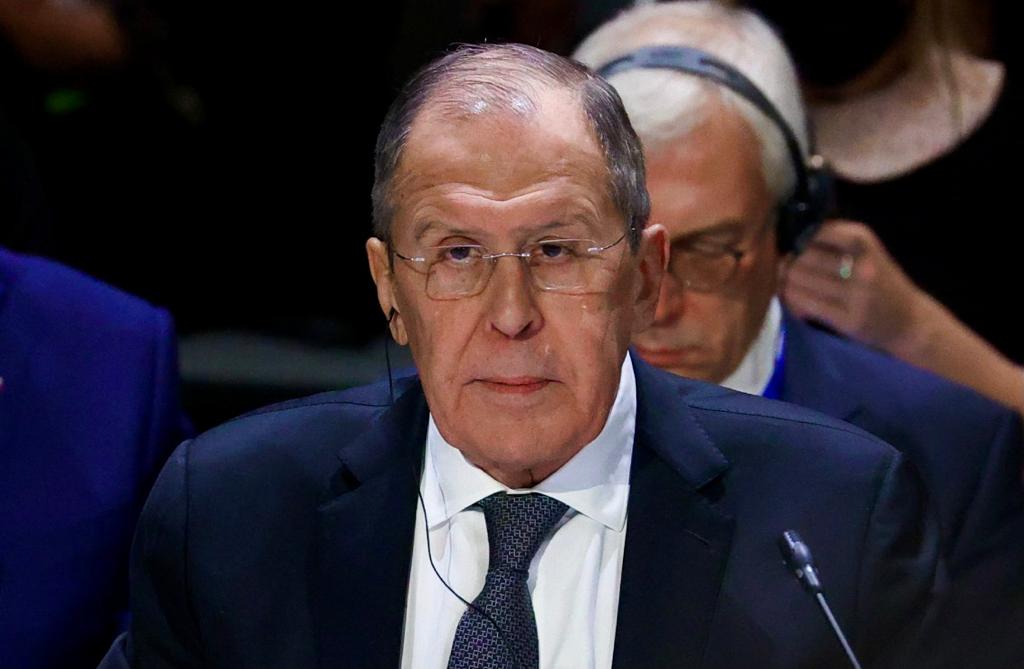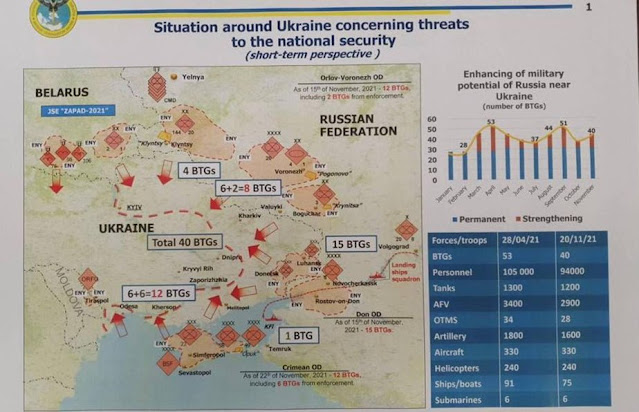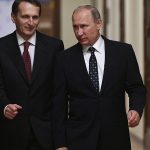Russia sent to Washington its security guarantees draft agreements with the United States and NATO. One of the draft clauses is having NATO’s guarantees of non-expansion on the territory of the post-Soviet countries.
These proposals came amid Russian troops’ active build-up near the borders of Ukraine that clearly indicates a high likely future full-scale intervention. Since 2014, Russia has seized and annexed the Crimean peninsula. In addition, Moscow finances, arms and controls pro-Russian proxies in eastern Ukraine.
From a military point of view, Ukraine does not pose any threat to Russia. Hypothetically, even in case of any NATO offensive weapon deployment on Ukrainian territory, the balance of power will not change significantly taking into account Russia’s nuclear potential.

The reason for why the Kremlin sticks to Ukraine lays in potential regime fall in Russia.
According to Russian strategists such as Vladislav Surkov, Russia’s existence depends on expanding its territories. Russian people need to feel proud of in their country. The territory expansion (revival in the Kremlin rhetoric) makes population blind to the actions of a corrupt and kleptocratic government, the critical state of economic and social spheres, and to human rights problems. However, this expansion has no boundaries and goes beyond the post-Soviet space (Syria, CAR). Forcing Belarus to merge as a step towards the Soviet Union rebirth is also a part of the territory expansion strategy, thereby, satisfying the imperial ambitions of the federal authorities and the population who compensates its own socio-economic problems with a sense of being involved in the empire strengthening. Although, obviously, the empire expansion plan is financed by the national funds that could be used more effectively, for example, to increase Russians’ life standards.
In order to retain power Russia needs an external enemy. Due to the propaganda machine this ‘enemy’ is automatically labeled guilty for the situation in the country and makes the population mobilized to support the authorities. The absence of an external enemy will direct public discontent to the Russian government.
Achievements and progress in the post-Soviet countries is the major risk for the Kremlin. Moscow failed to prevent the Baltic States from integrating into the EU and NATO in proper time. However, despite the pressure from Moscow, Ukraine managed to get the status of the EU associate member and declared the EU and NATO integration in the Constitution. That is why the Kremlin sees Ukraine’s achievements as a critical signal to the Russian population that democracy and partnership with the West can end successfully. In addition, demonstration of the state’s ability to get rid of Russia’s influence and gain its own statehood is destructive for the Russian government. Russian propaganda likes to use the failed state category to show countries’ failures to develop without Russia’s support, and, according to the narratives of Russian propaganda, their inevitable collapse in case of loss or refusal of this very support. If it does not happen the domestic propaganda cracks and the population may question both the veracity of the Russian government’s statements and doubt the efficiency of domestic and foreign policies as well.
The population of Russia is rigid in defending its rights and freedoms. However, it can analyze and compare the quality of their life and abroad. Once such an analysis misbalanced the Soviet Union despite ideology, control and the iron curtain. To have its own people under the thumb, the Kremlin needs controlled chaos in different regions. This chaos would portray Russia as attractive country for living and emphasize the following theses:
1. Mass protests lead to civil war.
2. Overthrow of the tyrant causes bloodshed and the state fall.
3. Respect for human rights sometimes threatens religious values and confronts traditions.
4. It is more important to preserve traditions even at the expenses of violation of rights of certain categories of citizens.
5. Power kleptocracy and corruption is not critical if the integrity of the state and civil order are maintained.
The destabilization of the situation in Belarus, support for instability in Georgia and Moldova are also addressed to Russians with one key message: any attempt to build democracy and throw an authoritarian regime leads to unrest, bloodshed and instability. The local conflict fuel tactics is supposed to convince Russians that the government protects them from bloodshed and war; this is the price they must pay in exchange for the current power preservation and “side effects” such as human rights violations, democratic gaps and total corruption.
Since the time of tsar’s times Russian authorities have cultivated in the population the idea of a “chosen” and superior nation born with a ‘liberation mission’. Using this myth Moscow sought to conquer the Slavic population of certain regions of Europe. However, these features were never close to reality. This image was created by the authorities to shift the political agenda from domestic problems to the outside. The public mobilization to participate in hostilities in the Balkans, Ukraine and Syria under ‘mission fulfilling’ pretext gave the Kremlin free play to get rid of the politically active and passionate population strong enough to throw the power. Such foreign operations with the Russian mercenaries’ involvement coincide with low power rating. However, human resources exhaustion after participating in foreign military campaigns together with proxy forces and growth of the victim’s defensive potential make the authority to use state resources and military forces to restore the centers of created chaos.
The preservation of power of Putin and his entourage, the so-called transit amid public support fall, critical state of health and the economic spheres started posing a threat in the world.
Trying to prevent the Kremlin’s aggression in any direction, the main mistake is made is that one separates Russian federal authorities from the Russian people. A lot of discussions rest on the hypothesis that the aggression comes mainly from the Kremlin and Russian people themselves do not support this policy.
However, actually Russian authorities reflect mentality of the people who need to be controlled and stay far from real freedom. During Napoleon’s military campaign in Russia, the French gave freedom to the Russian peasants in the occupied territories, but they denied and made a choice in favor of their feudal lord.
According to the latest public opinion poll, more than 75% of Russians do not exclude the possibility that current Russian-Ukrainian tensions could escalate into a war. 24% of them accuse the United States of escalating the conflict, and 50% blame both the United States and NATO. Thus, the public opinion results show that Russians are ready for military confrontation and the image of external enemy is already formed. In this context, Ukrainian case is interesting, since sociological polls indicate that a significant part of Russians consider Ukrainians as fraternal people, but nevertheless they accept and justify aggression against Ukraine.
At the same time, Russians see no threat in autocratic China, but they perceive democratic states of Europe and America as an enemy. The reason for this position is obvious: Russian government must be authoritarian or totalitarian to deprive the population of the need to make decisions independently, analyze the current situation and take responsibility. Instead of this, these decisions are delegated to the state leader, and responsibility for possible mistakes is put on the bureaucratic apparatus whose activity is not efficient enough for the state head to perform his duties.
The external facade of the Russian state and all its institutions started being duplicated from European countries since the time of Peter I. As for military-technical equipment of the army and military sciences, Russians did not lag far behind Western countries, moreover, in the 20th century they even took the lead in some industries. But the territory inhabited by Russians was never capable to duplicate a socio-political system remotely close to European democracy.
Thus, it is impossible to democratize Russia and its population. However, it is possible to support sovereign and democratic countries that seek to be free from the Kremlin’s control and see their future with the West, as well as the ones who are already members of the EU and NATO but are still faced with Russian influence in the national administration system. Such actions will stop expansion of Russia and create conditions for its regime to fall.





